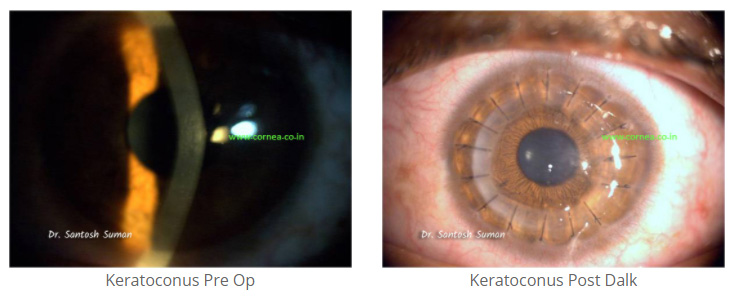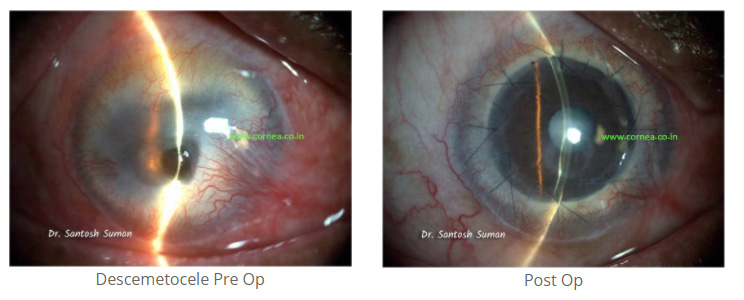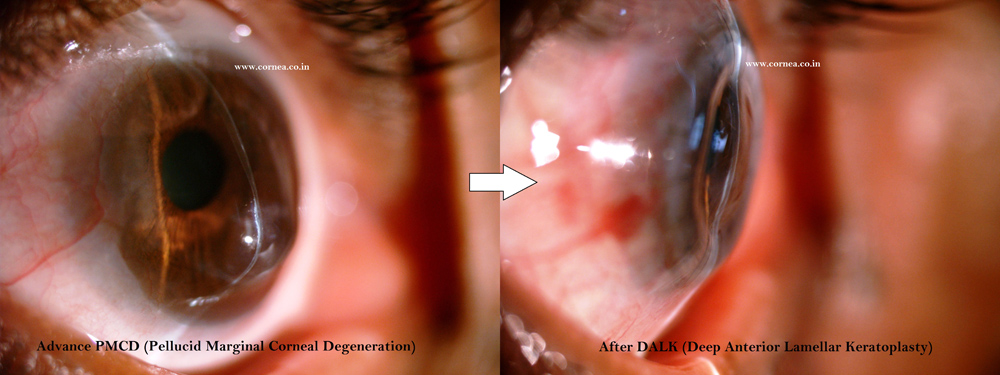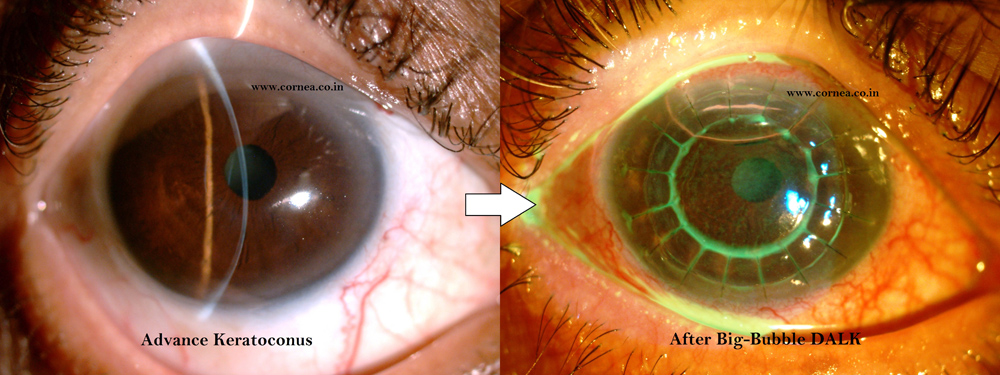1. What is DALK?
Deep Anterior Lamellar Keratoplasty (DALK) is the partial thickness corneal transplant which involves only the donor stroma, leaving the recipient’s own Descemet’s membrane and endothelium.

2. How is it different from PK (Penetrating Keratoplasty)?
In PK all the layers of cornea are removed and replaced by healthy donor cornea. In patients, where only the outer layers are diseased and endothelium is healthy, there is no point removing and replacing whole of cornea. In DALK only the anterior layers (epithelium to stroma) is replaced.
3. What are the advantages of DALK over PK?
There are several advantages of DALK over PK. Most important advantage is that DALK carries very very low risk of immune rejection, compared to PK. Suture related astigmatism is also relatively lesser in DALK.
4. What are the cases where DALK needs to be done?
DALK is most commonly done for advance keratoconus and other ecstatic disorders (like PMCD, Terriens). DALK can also be done in corneal scars, Spheroidal degeneration, Salzman’s nodular degeneration, few corneal stromal dystrophies and Mucopolysaccharidosis. Descemetocele and few infections of cornea (eg, Acanthamoeba) are also the indications for doing DALK.




